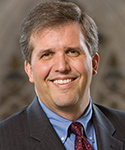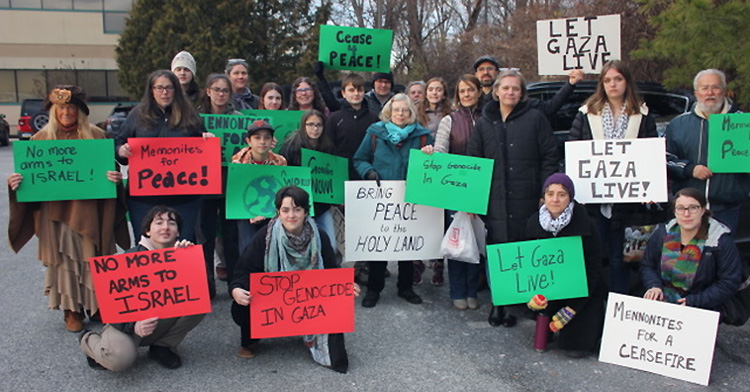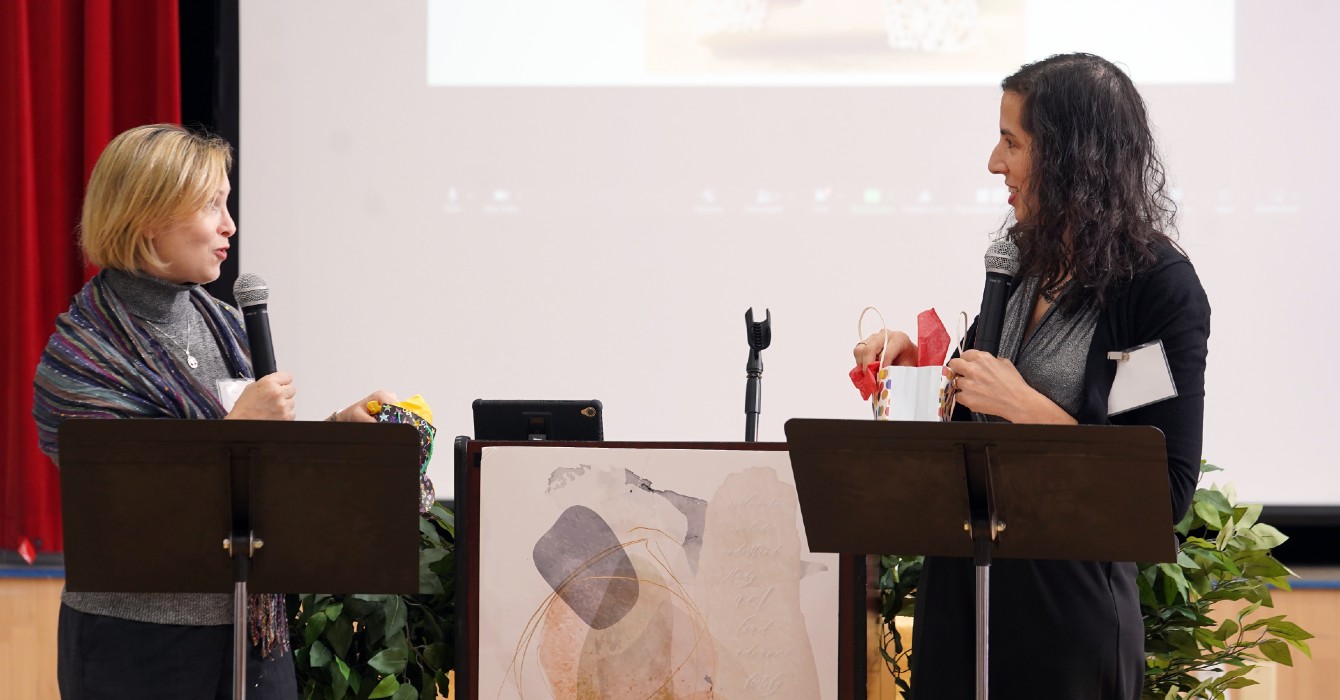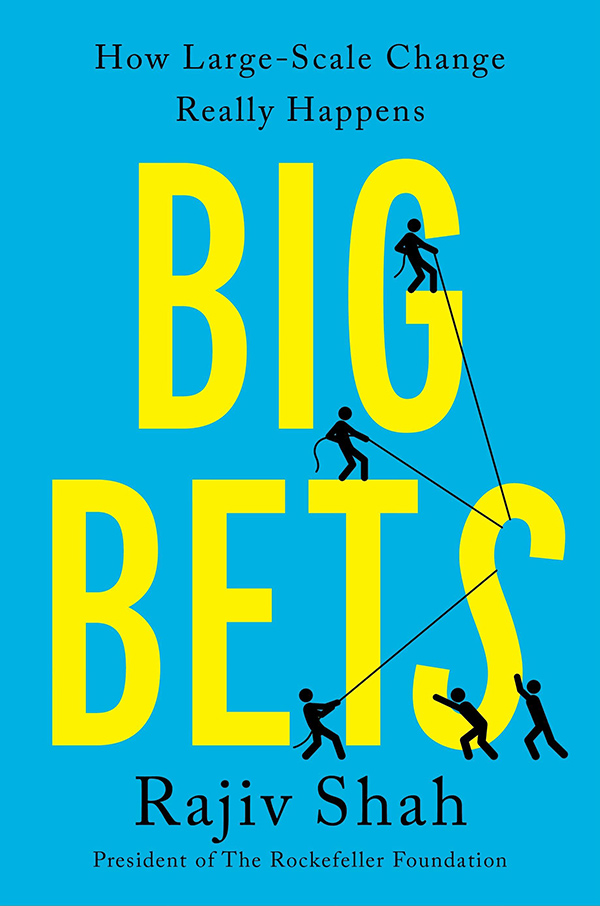Vibrant institutions are characterized by traditioned innovation. They continually engage their traditions in ways that create space for innovative engagement in the future. Innovation often seems like a mysterious gift, given only to those geniuses and visionaries who win MacArthur grants and Nobel Prizes.
Yet a closer look at the inner workings of innovation reveals something different. Innovative leaders do not merely rely on their intelligence, nor do they merely engage their traditions in creative ways. They pay attention to their contexts.
Indeed, leaders marked by traditioned innovation pay attention to deep trends that are shaping society and its institutions.
These trends give leaders the raw material that enables them to retrieve key insights and practices from their traditions, tinker with new ideas and solutions in their organizations, and adapt to substantive cultural changes. Vibrant institutions are marked by this kind of leadership that helps to transform wicked problems into innovative, generative solutions.
We describe here seven “deep trends” affecting Christian institutions to provoke conversation about the contexts in which traditioned innovation can occur. We characterize these as “deep trends” because they are more pervasive and perduring than temporary fads or loose speculation.
While they are not guaranteed to keep occurring, it would take major interventions to redirect them, and we think such interventions are unlikely. So the challenge is to cultivate patterns of discernment, guided by the Holy Spirit, on how to adapt faithfully and creatively to them rather than to pretend they don’t exist or to acknowledge but ignore them.
1. The digital revolution
Love it or hate it, we are in the midst of a digital revolution that is fundamentally reshaping much of our daily lives. And too often we find ourselves caught between unreserved enthusiasts for the latest technological fads and Luddite fearmongers telling us that those fads threaten all that is good about life. We need to develop opposable minds that can wrestle with the diverse blessings and burdens that the digital revolution offers.
A young pastor recently noted that “Facebooking” and tweeting are two of his most important ministerial responsibilities. Within minutes of posting a church status update, he can receive dozens of “Likes” and spark a vibrant conversation among parishioners in the comments section. Without Facebook, he wonders, how could such a wide-ranging and immediate encounter take place? Have the church and other Christian institutions ever seen such a powerful mechanism for communication?
Yet at the same time, as virtual relations become increasingly habitual, their drawbacks become more apparent.
Words on a screen can never replace words spoken from mouths; not only can the tonal ambiguity of text lead to unnecessary conflict, but reliance on virtual means of communication can impair our ability to have profound experiences together in the flesh. At its worst, social technology can serve as a surrogate for embodied relationships, leaving us strangely disconnected from the body of Christ.
Beyond its social functions, technology has also generated new possibilities for collaboration and education.
Videoconferencing allows diverse people from various contexts to engage one another, broadening the horizons of each in the process. While the demands of time, travel and money have often closed off collaborative opportunities in the past, videoconferencing ameliorates many of those constraints (and offers environmental benefits as well).
Educational technology, too, offers significant avenues for reshaping the way teachers teach and students learn. Apple, for example, has begun developing student-centric programs, designed to serve the particular learning style of each child. Moreover, experiments in distance learning have expanded from Internet startups at the fringe to rigorous programs at top-tier universities. Stanford’s open-source program has attracted tens of thousands of learners to its free Internet content.
Our growing dependence on technology for sociality, collaboration and education is affecting yet another aspect of our lives: how we think. On one hand, human beings have never had such immediate access to facts and figures, exposure to such a wide range of thoughts and research, or the ability to communicate those thoughts so freely to anyone at any time. On the other hand, this flood of technological stimulation has affected our ability to remain attentive to a single pursuit for a long period of time. How can we best understand the benefits and constraints of technology on our thinking? On the cultivation of wisdom?
Any strategy that institutions develop must take into account the ways that the digital revolution is changing basic patterns of remembering, perceiving, connecting and living daily life -- for good and for ill.
Rather than offering either uncritical praise of the benefits of technology or Luddite criticism of any new invention, we first need to acknowledge that the digital revolution is with us to stay. We then need to develop opposable ways of thinking so we can develop strategies of traditioned innovation.
2. A multinodal world
In our globalized age, traditional markers of identity and place are rapidly being renegotiated. With the proliferation of Internet technology, efficient travel options, and interconnected commerce and institutions, people from diverse cultures now interact with ever-greater frequency and fluidity.
In particular, this shift has generated new questions and issues at the intersection of ethnicity, church and society. We don’t just live in a “global” environment; rather, we live in a multinodal world in which assumptions about culture and ethnicity have to be negotiated in fresh ways and at deeper levels.
No American institution, for example, can ignore the rising influence of immigrants from Central and South America. From linguistic and cultural considerations to issues of minority representation in places of power, the influx of immigrants has created a new set of institutional challenges. At the same time, however, ethnic diversity also presents Christian institutions with a new set of gifts. Immigrant communities not only bring fresh perspectives and ideas, but they often keep the church’s ear attuned to the voice of the poor and those on the margins.
Ethnic diversity has also reshaped our missional beliefs and practices.
Through most of modernity, the portrait of Christian missions has involved groups of privileged Western Christians traveling to “underdeveloped” communities in Latin America, Africa and Asia to provide teaching, construction, medical services and the like. But because of recent power shifts and a general ecclesial decline in the West, mission now looks quite different. Korean Christians are sending missionaries to China, for example, and African Christians to Western Europe.
This multidirectional form of mission emerges at a time when the strength of Christianity resides more in the global South than the North. Accordingly, many Western churches have adopted a more reciprocal, capacity-building approach to mission.
Building off Muhammad Yunus’ microcredit and microfinance model, programs like the Zimbabwe Orphans Endeavor (ZOE) seek to equip those in need with the capacity to earn a living for themselves rather than depend on Western aid. And many Western Christians are experiencing the fresh impact of the Spirit through immigrant communities’ dynamic worship and mission.
These significant shifts pose deep questions for Christian institutions across multiple lines.
They not only question Western assumptions; they also destabilize conventional ways in which we have come to think about diversity, as well as mission. In a multinodal world, the “world” we seek to engage increasingly exists within American institutions just as much as beyond them.
3. Reconfiguring denominations and emerging forms of congregating
For decades, it made some sense to describe a typical American church. It would probably be a Methodist, Baptist or Presbyterian church of moderate size, dominated by one particular social or racial group, and it would adhere to denominational norms of doctrine, polity and practice. In the past few decades, however, each of these descriptors has changed so significantly that the term “typical American church” has become increasingly unintelligible.
The decline of mainline Protestantism’s membership and cultural influence has opened the door for a range of new ecclesial configurations, most of which differ sharply from the mainline model. Some of these configurations include a heightened awareness of Roman Catholic congregations, fueled especially by the increased ethnic diversity of the last half-century.
Megachurches have exploded onto the scene, attracting new members by the thousands and planting satellite campuses across the country.
At some satellites, the sermon is delivered by the lead pastor through video from the main campus. In other megachurches, several pastors study and craft sermons together and fan out to preach in various locations. Many of these megachurches are evangelical and nondenominational.
On the other end of the spectrum, a growing number of young Christians have moved in the opposite direction. “New Monastics,” as they have been called, create intentional communities among the poor to live out their faith in the neglected places of society. These Christians consciously resist the church-growth metrics of megachurches, though their witness has itself grown significantly in recent years.
The New Monastics are one example of new patterns of congregating.
Many other Christians, especially among younger generations, have also begun experimenting with new patterns of congregating. House churches have sprouted up around the country, often growing out of local networks of people committed to a biblical form of congregating. Others are gathering around music or particular forms of social witness, where Christian community -- and often intentional living arrangements -- are connected to a desire to find life in community less encumbered by traditional institutions and established notions of “church.”
In its most extreme form, this frustration with traditional institutions has led to what is colloquially called the “I’m spiritual but not religious” culture, in which a more private and individual form of spirituality actually undermines the search for sustainable community.
Amidst these nondenominational movements and new forms of congregating, denominations find themselves struggling with self-definition.
The terms “conservative,” “liberal,” “traditional” and “progressive” are now more indicative of people’s loyalties than “Methodist,” “Lutheran” or even “Roman Catholic.” Internal debates rage over the authority of Scripture, the ordination of gays and lesbians, same-sex marriage, the ordination of women and other hot-button issues. In many cases, such obstacles have proven insurmountable, leaving churches with various options for realignment that are under way but by no means settled.
The future of denominations is not clear; what is clear is that the old structures of denominations are changing dramatically. Institutions that have depended on denominational loyalty for funding, students, clients and other resources are having to reinvent their relationships, even as new movements are creating new institutions.
4. Questioning institutions
Only 44 percent of Americans have great confidence in churches and other religious institutions, according to a recent Gallup poll.
This lack of institutional trust, however, extends far beyond the walls of religious institutions. Indeed, political debates surrounding the 2012 election have often been framed in institutional terms. Can we trust a candidate who made his career at a private equity firm that is part of the economic system that brought us the 2008 crisis? Or a candidate who seems beholden to outdated models of government influence? Can either of these two candidates do anything about the rising costs of higher education?
Higher education, meanwhile, has come under fire for more reasons than its rising costs. The American public has grown skeptical of the value of its degrees; while a B.A. used to guarantee employment, scores of college graduates are now looking for jobs. Colleges and universities feel the strain, too, as shrinking budgets have forced administrators to cut programs and hire mostly adjunct faculty. The future of higher education looks challenging, with the price of its product continuing to rise even as consumer confidence wanes.
The institutional role of the church in society has raised questions from Christians and non-Christians alike.
Members of the “emergent church” movement often see the institutional church as a barrier to reaching new places in society. A growing number of young Christians have become uncomfortable with the accommodated nature of the institutional church to various political causes. And many skeptical secularists worry that “institution” is simply another word for “lifeless bureaucracy.”
Common to both insiders and outsiders, though, is deep confusion over the nature, place and role of institutions in American society, including the church. Much of the blame for that confusion can be placed on the shoulders of Christian institutions themselves. Many of them are unclear about their mission and reason for existence, are led by ineffective people and can get bogged down in bureaucratic detail. Even those institutions with a sense of mission and effective leaders are often too weak or small to effect meaningful and lasting change.
5. Economic stress on Christian institutions
In a normal economic climate, dealing with institutional finances can quickly become tedious and frustrating. But in fragile economic conditions -- like those created by the 2008 downturn -- tedium and frustration give way to financial self-reflection. Leaders probe the economic foundations of their institutions, seeking to understand where their own institutions fit into wider economic trends.
The combination of broader global economic fragility, rising health care and pension costs, and the relatively small size of many Christian institutions has resulted in tremendous economic stress. These dynamics, when added to other trends such as the reconfiguring of denominations, have caused many Christian institutions not only to feel stress but to turn to desperate measures for survival.
Further, there are significant shifts in the habits of philanthropists and other foundations. Rather than offering regular support through endowment and annual fund gifts, many people are looking more at high-impact philanthropy, venture philanthropy, and other approaches oriented toward outcomes and the development of revenue streams that will guarantee sustainability.
The most vibrant Christian institutions are revisiting their basic economic models, developing new partnerships and networks to broaden the scale and scope of their activities and impact, and exploring new sources of revenue. The potential for experimentation and innovation to create sustainable economic development is great, but the danger is more readily obvious. And when danger lurks, it is often more tempting to try to keep the ship from sinking than to develop strategies to ensure that we don’t miss the boat that offers long-term life.
6. Shifting vocations of laypeople
Christian laypeople often struggle to balance the demands of career, family and church life. For many, commitment to the church can take the shape of singing in the choir, volunteering to teach Sunday school or serving on any number of committees. This approach helps keep priorities balanced by distinguishing between specific responsibilities in specific arenas.
There’s nothing wrong with this approach, of course, but a growing number of laypeople are seeking fulfillment through the integration of faith, career and daily life. Laypeople increasingly ask questions like, What does it mean to be a Christian lawyer? Does it really change anything about medicine or physics if you practice it as a Christian? and, What kinds of risks to my career should I be willing to undertake for the sake of the gospel? Many laypeople, too, will expect their pastors, Christian institutional leaders, and Christian books and digital resources to help them articulate thoughtful responses.
Indeed, this trend among the laity for more integrated approaches to daily life in the world is challenging the church to adapt and the clergy to think of their roles in fresh ways. The church will resemble less an organization to which people come and more a body involved in the world, and clergy will serve more as enablers than as creators. Their task will be to equip the saints for ministry. A pastor will always lead theologically, but much of the church’s imagination for ministry will come from those laypeople who have learned to integrate their faith into every aspect of their lives.
This ought to reinvigorate the importance of Christian educational institutions, from pre-K through graduate school (including theological education opportunities for laypeople). It ought also to heighten attention to the formation of Christian discipleship for life in the world, for the ways in which Christians practice diverse vocations in the arts, business, medicine, law, teaching and many other settings.
7. The lure of cities
According to the United Nations Department of Economic and Social Affairs, almost 70 percent of the world’s projected 9.3 billion people will be living in cities by the year 2050. Compared with the 30 percent of 2.5 billion who lived in cities in 1950, it’s safe to say that a global trend toward living in cities has emerged. It’s also safe to say that this development presents a mixed bag of opportunities and challenges for the church and other Christian institutions.
Although some of those challenges will reveal themselves only in time, many others are already predictable.
Urbanization will likely lead to the explosive growth of congregations capable of attracting new urbanites, leaving many rural congregations bereft of members. This widening gap between bustling urban congregations and dwindling rural ones will force judicatories into difficult decisions. Should smaller rural churches merge? Can rural churches remain financially sustainable without major external support? What kinds of partnerships might or might not be possible between rural and urban churches? Can rural churches develop networks and create assets that make them feel more like cities?
If the 20th century has been any indication, we can also expect that urbanization will lead to a whole range of social ills. Bigger cities, ever-notorious for breeding poverty, filth and crime, will challenge even the most effective social justice programs an urban church can offer. Just as the metropolis created conditions for a new species of poverty and crime, the church can expect to deal with similar developments as cities continue to grow.
Yet the same ingredients that make cities a breeding ground for social ills -- physical proximity, cultural differences and limited resources, among others -- also make cities vibrant locations for creativity and innovation to flourish. Physical proximity brings talented and creative people together to collaborate, cultural diversity opens up new avenues for exploration and mutual growth, and limited resources force people to experiment with creative alternatives to traditional solutions.
The role Christian institutions will have in this surge of innovation will depend, of course, on their ability to collaborate widely, draw in unlikely partners and galvanize support from diverse groups of city dwellers. Wayne Meeks entitled his book on early Christianity “The First Urban Christians,” to signify that Christianity was, in its origins, very much a movement that grew in cities. The 21st century will be a test as to the extent to which Christianity can once again capture the imagination of new generations of urbanites.
It is important to note that these trends mutually influence one another.
The shift to cities affects the way laypeople understand their vocations and the ways people will be congregating, yet the digital revolution also offers opportunities for people in rural communities to be connected to one another in new ways.
The multinodal world is reshaping life in major cities, but it is increasingly present even in the most rural of areas. The questioning of institutions is leading to economic stress for existing congregations, even as several other trends provide opportunities for new networks of relationships and the emergence of new, sustainable models of institutions.
We do not presume to suggest that these trends are the only or necessarily the most significant ones in any particular context.
We do suggest, however, that the more we attend to deep trends such as these, the more vibrant and innovative our institutions will likely become. We won’t be preoccupied with reacting to short-term fads or wishing the future would be different than it likely will be. We will be practicing traditioned innovation in ways that will offer life and faithful witness to the God who continues to make all things new.















